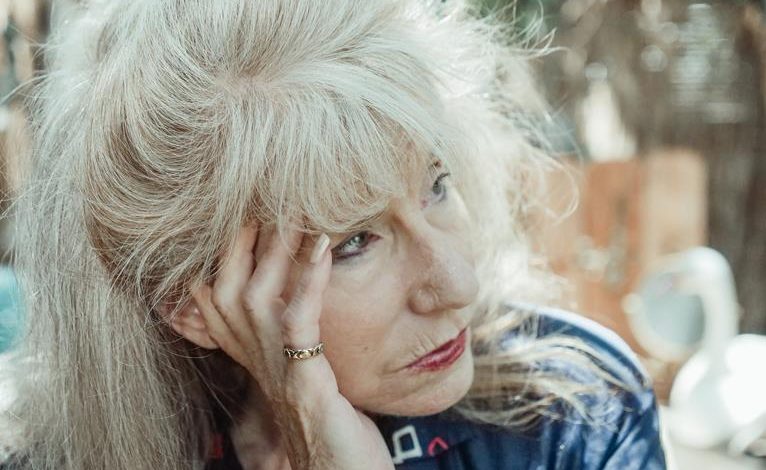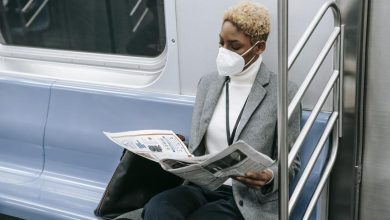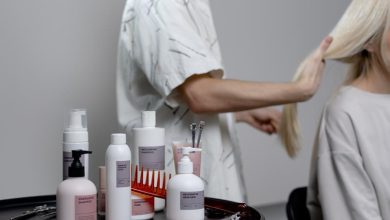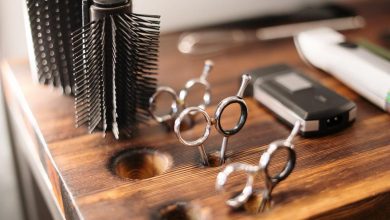Can Hair Dyes Cause Hair Loss or Thinning?

In the world of hair color, the allure of a vibrant change can be irresistible. However, beneath the surface lies a concern that plagues many: can hair dyes cause hair loss or thinning? This article delves into the relationship between hair dyes and these potential side effects, providing an objective analysis of the available information. Join us as we explore the different types of hair dyes, their potential damage, and practical advice on how to protect and maintain the health of your hair.
Types of Hair Dyes and Their Potential Effects
The potential effects of different types of hair dyes can vary depending on the specific type and formulation. Permanent hair dye, in particular, carries potential risks due to its chemical composition. Permanent hair dye penetrates the hair shaft and alters its natural color by breaking down the existing pigments. However, this process can damage the lipids and proteins of the hair strands, making them more prone to breakage and hair thinning. Alternatives to traditional hair dye, such as temporary hair color, semi-permanent hair color, and henna, offer a safer option for those concerned about the potential risks associated with permanent hair dye. These alternatives provide temporary color changes without the same level of damage potential. It is important for individuals to consider these alternatives and weigh the potential risks before deciding on a hair dye option.
Side Effects of Hair Dye on Hair Health
Using hair dye can result in various side effects on hair health, including breakage and thinning. Here are some potential side effects of hair dye on hair health:
- Can hair dye cause scalp irritation? Some people may experience scalp irritation after using hair dye. This can manifest as redness, itching, or a burning sensation on the scalp. It is important to do a patch test before dyeing your hair to check for any allergic reactions.
- Can hair dye lead to hair breakage? Yes, hair dye can weaken the hair strands and make them more prone to breakage. This is especially true for bleach and lighteners, which can significantly weaken the hair. Fine and thin hair is more susceptible to damage from hair dye.
- Hair dye can also cause hair thinning and loss. The chemicals in hair dye can damage the lipids and proteins in the hair strands, leading to hair thinning over time.
- It is worth noting that hair dye does not slow down or stop hair growth. However, it can cause breakage and make the hair appear thinner.
- The extent of hair damage from hair dye depends on various factors, such as the natural hair color and hair type. Fine and thin hair is more susceptible to damage, while thicker and healthier hair may be more resilient.
When using hair dye, it is important to take precautions to minimize potential damage to the hair. This includes following instructions carefully, avoiding leaving the dye in for longer than recommended, and deep conditioning the hair after dyeing. Consulting a licensed cosmetologist at a salon can also help ensure safe and professional hair dyeing techniques. Using color-safe hair products and practicing overall good hair care can further mitigate damage caused by hair dye.
The Importance of Safe Hair Dyeing Techniques
Safe hair dyeing techniques are essential for minimizing potential damage and ensuring the health of the hair. The importance of professional application cannot be overstated. Licensed cosmetologists at salons have the knowledge and expertise to properly apply hair dye, reducing the risk of damage. They also have access to professional-grade products that the general public may not have. Additionally, patch testing plays a crucial role in safe hair dyeing. This involves applying a small amount of dye to a small area of skin to check for any adverse reactions or allergies. Patch testing helps to identify any potential risks before the full application of hair dye, preventing any harmful effects on the scalp and hair. By following these safe hair dyeing techniques, individuals can enjoy the benefits of hair dye while minimizing the risk of damage or hair loss.
Choosing Color-Safe Hair Products
Selecting and incorporating color-safe hair products into your hair care routine is crucial for maintaining the vibrancy and longevity of your hair color. Color-safe hair products are specifically formulated to protect and preserve the color-treated hair, preventing fading and damage. Here are five key points to consider when choosing color-safe hair products:
- Look for moisturizing shampoos and conditioners: These products help to hydrate and nourish the hair, preventing dryness and breakage. Moisturizing ingredients like argan oil, shea butter, and glycerin can help retain moisture in the hair.
- Consider your hair type: Different hair types have different needs. For example, curly hair may benefit from products that provide extra moisture and help define curls. Fine hair may benefit from volumizing products that add body and texture.
- Check for ingredients that protect color: Look for products that contain UV filters or antioxidants to shield your hair from environmental damage, which can fade the color.
- Avoid sulfates and harsh detergents: These can strip the hair of its natural oils and color, causing it to fade faster. Opt for sulfate-free shampoos and gentle cleansers.
- Stick to a consistent hair care routine: Using color-safe products consistently will help maintain the integrity of your hair color over time.
Special Considerations for Aging Hair
As hair ages, it is important to take into account specific considerations for maintaining its health and preventing damage. Aging hair tends to become thinner, more brittle, and less resilient, making it more susceptible to damage from hair dye. When choosing a hair dye for thinning hair, it is essential to opt for gentle and nourishing formulas that minimize further damage and promote hair health. Additionally, special attention should be given to the overall hair care routine, including the use of color-safe products, regular deep conditioning treatments, and avoiding excessive heat styling. Taking these special considerations into account can help maintain the health and vitality of aging hair while achieving the desired hair color.
| Special Considerations for Aging Hair |
|---|
| Opt for gentle and nourishing hair dye formulas |
| Use color-safe products for maintaining hair color |
| Regular deep conditioning treatments for hair health |
Incorporating these considerations into your hair care routine can help prevent further damage and maintain the health of aging hair.
Hair Care Tips to Minimize Damage From Hair Dye
One effective way to minimize damage from hair dye is by incorporating five essential hair care tips into your routine. These tips include:
- Perform a patch test before dyeing your entire head of hair to ensure you are not allergic to the dye.
- Use a deep conditioning treatment before and after dyeing your hair to nourish and strengthen the hair strands.
- Limit the frequency of hair dyeing to reduce the overall damage caused by chemical exposure.
- Avoid heat styling tools and excessive heat as they can further damage the hair.
- Trim your hair regularly to remove split ends and prevent breakage.
Nourishing Hair Products for Overall Hair Health
Using high-quality nourishing hair products is essential for promoting overall hair health and vitality. These products provide essential nutrients for hair growth and help in maintaining the strength and integrity of the hair strands. One way to nourish the hair is by incorporating DIY hair masks for damaged hair into your hair care routine. These masks can be made with ingredients like avocado, coconut oil, honey, and yogurt, which are known for their moisturizing and repairing properties. Applying these masks once or twice a week can help restore moisture, repair damage, and improve the overall health of the hair. Additionally, using products that are specifically formulated for your hair type and concerns, such as volumizing shampoos for fine hair or moisturizing shampoos for curly hair, can further enhance the nourishing effects and promote optimal hair health.
The Role of Regular Deep Conditioning Treatments
Regularly incorporating deep conditioning treatments into your hair care routine is crucial for maintaining the health and strength of your hair strands. Deep conditioning treatments provide numerous benefits that can help counteract the potential damage caused by hair dye. Here are some key benefits of regular deep conditioning treatments:
- Deeply moisturizes the hair, restoring hydration and preventing dryness and brittleness.
- Improves the elasticity of the hair, reducing the likelihood of breakage and split ends.
- Nourishes and strengthens the hair follicles, promoting healthy hair growth.
- Enhances the overall shine and smoothness of the hair, making it more manageable and easier to style.
- Protects the hair from environmental stressors and heat styling damage.
When choosing the right deep conditioning treatments, consider the following tips:
- Look for products that are specifically formulated for your hair type and concerns.
- Check the ingredient list for nourishing and hydrating ingredients such as argan oil, shea butter, and keratin.
- Consider the frequency of use and the time required for the treatment to ensure it fits into your hair care routine.
- Read reviews and seek recommendations from trusted sources to find effective products.
Heat Styling and Hair Dye: How to Mitigate Damage
To minimize damage caused by heat styling, it is important to take certain precautions when using hair dye. Heat styling, such as blow drying, straightening, or curling, can further weaken the hair strands that have already been exposed to the damaging effects of hair dye. To mitigate this damage, there are several tips for minimizing damage and maintaining healthy hair. First, it is crucial to use heat protectant products before applying heat to the hair. These products create a barrier between the heat and the hair, reducing the potential for damage. Additionally, it is advisable to use lower heat settings and avoid excessive heat exposure. Limiting heat styling to a few times a week can also help minimize damage. Lastly, incorporating regular deep conditioning treatments into your hair care routine can help repair and nourish the hair, making it more resistant to the damaging effects of heat styling.
Gentle Handling and Hairstyles to Prevent Hair Damage
With careful handling and by choosing gentle hairstyles, individuals can effectively prevent hair damage caused by excessive pulling or tension. Here are some gentle hair handling techniques and hairstyles for hair protection:
- Avoid tight hairstyles such as ponytails, braids, and buns that can put strain on the hair follicles and lead to breakage.
- Use wide-toothed combs or brushes with soft bristles to detangle hair gently without causing unnecessary pulling or tugging.
- Minimize the use of heat styling tools like flat irons and curling wands, as excessive heat can weaken the hair and make it more prone to damage.
- Opt for hairstyles that distribute the tension evenly, such as loose updos or half-up, half-down styles.
- Consider protective hairstyles like bantu knots, twists, or braids that can help to minimize manipulation and reduce the risk of breakage.



